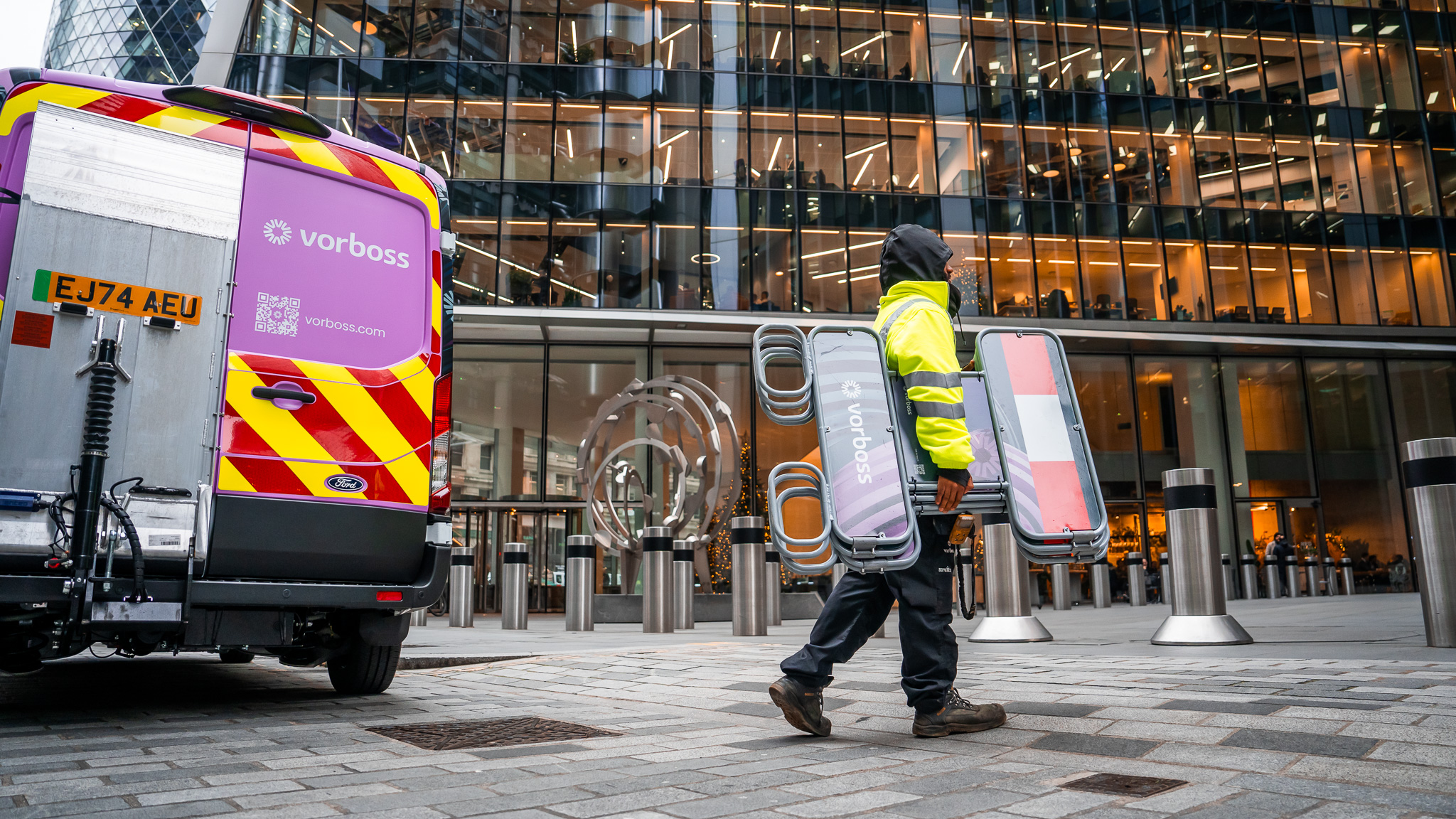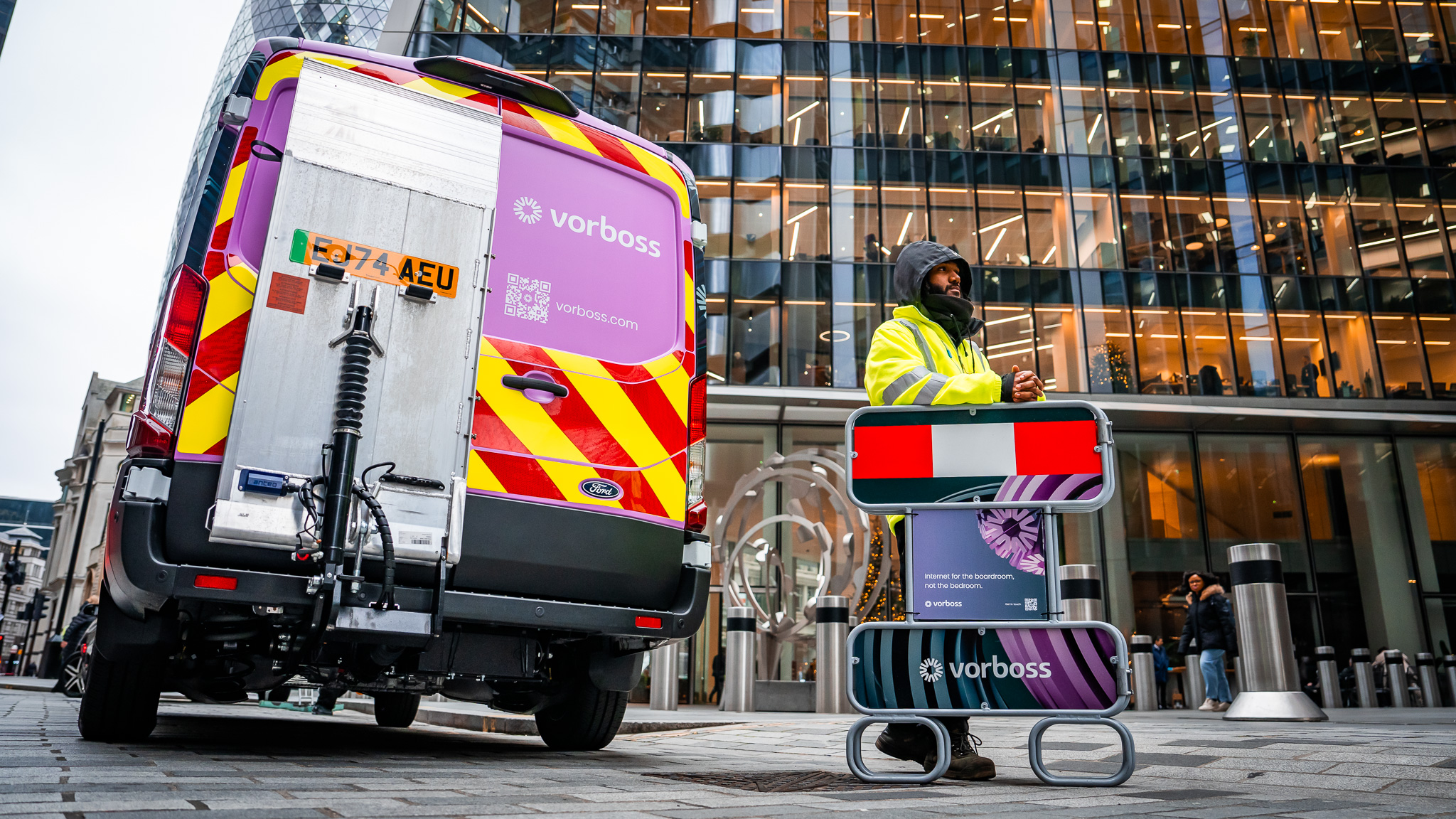4 myths UK telecoms service providers want you to believe video copy
April 21, 2023
|
6
min read

Highlights
Most ISPs resell legacy infrastructure, unlike Vorboss that has purpose-built its own fibre network for business connectivity. Dispelling the myth that older networks are more secure, Vorboss has security measures integrated into its new network design, ensuring protection against vulnerabilities and offering direct cable connectivity for enhanced security. Vorboss advocates for 10Gbps as the new standard in connectivity, addressing the misconception that businesses don't require such bandwidth.
As technology advances, the connectivity needs of businesses change and grow. Unfortunately, other UK telecoms service providers lack the agility to adapt their services to this ever-changing landscape. They would rather keep customers in the dark about the infrastructure they are using, so they stay complacent with the status quo.
At Vorboss, we think that's wrong, so we'll dive into some of the most common myths that UK telecoms service providers perpetuate. A lack of transparency in the industry prevents businesses from getting the connectivity they deserve—connectivity that will fuel their ambitions.
Misconceptions about UK telecoms service providers
.svg)
Myth #1: Each ISP has its own fibre network
You may believe that each Internet Service Provider (ISP) has its own dedicated fibre network. In reality, most ISPs in London resell legacy Openreach infrastructure rather than relying on a network they built. This leads to unreliable connections and slow speeds for their customers.
Vorboss is the only ISP in London that has purpose-built its fibre network from scratch, using the latest technology and design. We are the only vertically integrated ISP dedicated to business in London, owning the network and service end-to-end. This gives us complete control and responsibility over our network, delivery, infrastructure, and customer experience.
Unlike other ISPs, we have no third parties involved at any stage of the process. Our in-house team handles everything from customer service, contracts, billing, installation, network design, and more. Customers deal directly with the engineers who built the network, ensuring quick response times for fault rectification, installations, and bandwidth upgrades.
Because we own the network, we can provide transparent pricing and commercial terms. There are no hidden costs or extra charges; the bandwidth you purchase is the bandwidth you receive.
Myth #2: Legacy networks are the most secure
Another misconception in the telecommunications industry is the belief that legacy networks are inherently more secure than AltNets. Telecoms companies claim that their older networks are more secure than their competitors, but the truth is that the age of a network does not determine its security level.
We understand the importance of network security at Vorboss. We designed our brand-new network with the latest security measures to ensure the highest level of protection for our customers' data.
Unlike legacy fibre networks that use on-street infrastructure, which can be vulnerable to vandalism, weather, power failures, and traffic damage, we deliver direct cable connectivity to eliminate these risks. We have diverse routing options to ensure resilience, and no one is ever more than 20 minutes away from a Vorboss engineer in Central London. We also have 24/7 proactive network monitoring and operational support from experienced network and security operations professionals.
No network is ever 100% secure, regardless of whether it's a legacy network or a newer one. Security is determined by the measures to protect the network, not by age. So, the belief that legacy networks are inherently more secure is a myth.

Myth #3: No one really needs 10Gbps bandwidth
Many mistakenly believe that businesses don't need to have 10Gbps bandwidth. Why, then, are we at Vorboss trying to make 10Gbps the new standard in speed and capacity?
For London to remain a global leader, its businesses must be future-proofed. Bandwidth consumption is constantly growing – data requirements are doubling every two years – so limited bandwidth will quickly start holding back the companies driving our city's economy. They need to be able to use emerging technologies, such as AI and quantum computing, to remain competitive.
Businesses can focus on innovation, transformation, and gaining a competitive edge by removing bandwidth concerns. We understand that some companies may not need that much bandwidth right now, but we provide it on purpose so they will never have to worry about running out in the future. Connectivity should never be a limitation for business growth.
If your business uses 1Gbps, then it uses a legacy product. The network these internet service providers use would need substantial upgrades to provide what Vorboss provides – 10Gbps as a minimum, with the capability to quickly ramp up to 100Gbps on the same network. We invested £250m into a brand-new fibre network designed for forward-thinking organisations' current and future needs.
Selling less than 10Gbps doesn't make sense to us, as it doesn't cost us any less to provide you with less bandwidth. ISPs charging incrementally for bandwidth consumption are exploiting customers to maximise profits. We don't constrain or manufacture bandwidth, and we provide purposeful abundance and transparency in pricing to our customers.
Myth #4: ISPs have the right to throttle your internet speeds
Throttling refers to ISPs temporarily slowing down your internet connection speed to manage their network capacity. This practice is often associated with wireless and mobile ISPs, but even some business fibre providers use throttling. But is that allowed?
Here's the truth – if your ISP is throttling your internet speeds, it should be outlined in your service level agreement (SLA). You have the right to be aware if you're not getting the rate you're paying for all day, every day.
It's important to note that ISPs are required to be transparent in their approach to net neutrality and traffic management. ISPs are prohibited from prioritising certain types of traffic over others and cannot intentionally slow down your connection. If you feel like throttling tactics from your current provider are holding you back, it's time to demand more or consider switching to a reliable ISP.
At Vorboss, we never throttle customer speeds, regardless of the bandwidth package customers choose. We believe in providing reliable and consistent internet speeds to our customers without sneaky tactics to hold them back. Besides, we offer Direct Internet Access (DIA), delivering connectivity to each specific customer via their own direct fibre connection. That means no varying speeds or sharing bandwidth.

Why you should demand more from UK telecoms companies
We have brought a new type of business-only internet and service to London, which is better and different from other UK telecoms companies. We want to lift the lid on industry secrets and call things out for the long-term health of our customers and the city.
We envision a future where the bandwidth for any task is available, allowing businesses to explore new solutions, ways of working, and technologies in the same way unlimited data has changed consumer behaviour with handheld devices. In turn, London will be able to compete at the highest level for years to come.
The telecommunications industry is ever-changing, and customers should always demand the best from their telecoms companies. Don't be fooled by the myths and misconceptions about them—your business deserves better.
If you want to learn more about connecting with us, speak to one of our experts today.
Tell us about yourself so we can serve you best.
Got a question?
More articles

For many landlords and building managers, the word “wayleave” feels like the responsible route whenever a fibre circuit is being installed on their property. It sounds formal and safe – a neat legal box to tick.
In many cases, however, a wayleave adds unnecessary complexity and delays, frustrates tenants, and can expose landlords to long-term legal risks.
At Vorboss, we’ve connected thousands of office spaces across London without a wayleave, keeping landlords in full control and getting tenants online faster.

What is a wayleave?
A wayleave is a written agreement between a landowner and a telecoms operator. It gives the operator permission to install and keep equipment on private property.
What many people don’t realise is that signing a wayleave also activates “Code rights” under the Electronic Communications Code. These rights go beyond simple permission, they give the operator legal powers to stay on the property indefinitely, access it when needed, and even refuse removal of their equipment in certain situations.
For a typical connection into a commercial building in London, a wayleave can make the fibre installation process slower, more expensive, and limit the landlord’s flexibility long term.
Why a wayleave isn’t required for standard in-building fibre connections
For a standard in-building fibre connection serving a tenant, a wayleave isn’t a legal requirement. Important protections, like building access, fire safety, repairing any damage, and removing equipment, are already covered by the tenant’s lease and usual building rules.
If no wayleave is signed, no Code rights are triggered, meaning the landlord retains full control and the installation exists under a simple, fully revocable licence.
In practice, this gives landlords far more protection and flexibility:
- No legal lock-in – the telecoms operator has no long-term rights to stay or refuse removal.
- Landlords keep full control – equipment can be moved or removed when the building changes.
- Faster fibre installation – no time lost in drafting contracts or solicitor reviews.
- Happier tenants – connections go live quicker; tenants get to move in faster.
By contrast, signing a wayleave and granting Code rights introduces a complex and expensive legal process for any fibre removal or relocation. This can take at least 18 months, plus potential court or tribunal proceedings, making it slower, and far less flexible for the landlord.

Public services across central London are evolving, and the City of London Corporation is leading the way.
Whether you work, live or study in the Square Mile, you’ll soon feel the difference that faster, more dependable connectivity brings.

What is the Future Network Programme?
The City of London Corporation is rolling out the Future Network Programme, a major project to modernise its entire digital infrastructure and bring everything under one unified network.
From offices and schools to iconic green spaces like Hampstead Heath, cultural destinations like the Barbican, and historic markets such as Leadenhall and Old Spitalfields, this upgrade will mean more reliable connectivity across the City’s buildings and public spaces.
It also extends to essential services, including critical sites run by the City of London Police. This enhanced connectivity will support everything from secure communication systems to faster, more resilient networks for emergency operations.
Leading this transformation is Roc Technologies, supported by Juniper Networks and Palo Alto Networks; all powered by the Vorboss fibre network. Together, we’re bringing the City onto a modern digital foundation that’s ready to support its future.
Who the Future Network Programme benefits and how?
The programme is designed for everyone who depends on public services in the Square Mile:
- Students in City-run schools will have fast, reliable connectivity to fully access digital learning tools.
- Public-sector teams will experience smoother hybrid working, better access to online platforms, and more efficient collaboration across locations.
- Residents and visitors will see improvements in public Wi-Fi, digital services, and online access in libraries, community hubs, and other shared spaces.
- The City of London Police will gain a more secure, faster and resilient network that enhances CCTV reliability and enables more effective frontline operations.

.avif)

.avif)

